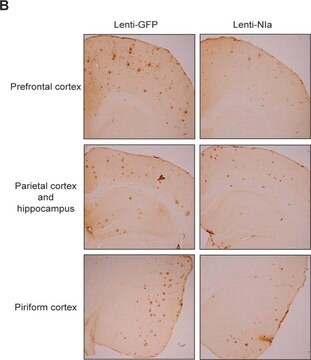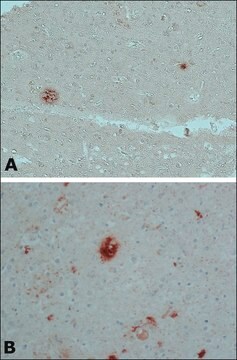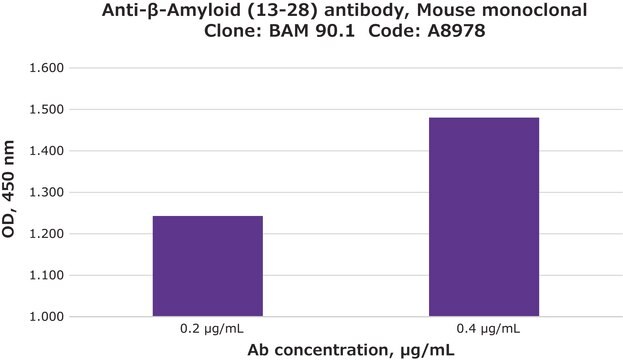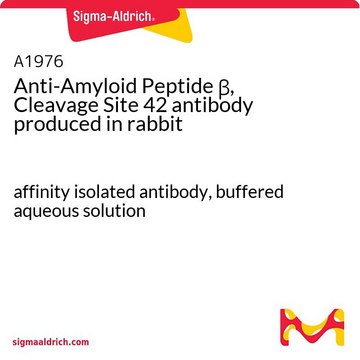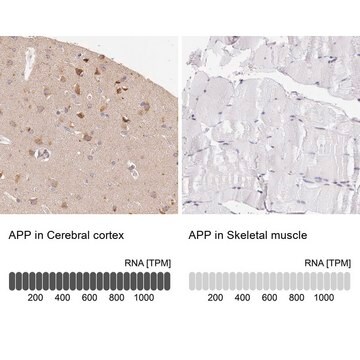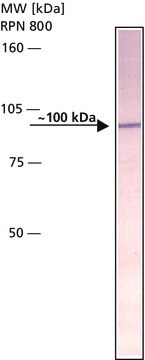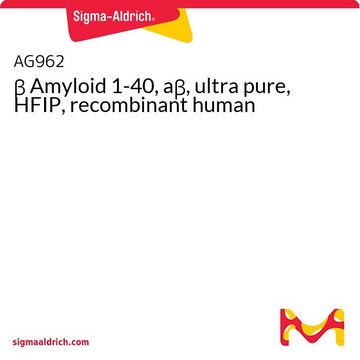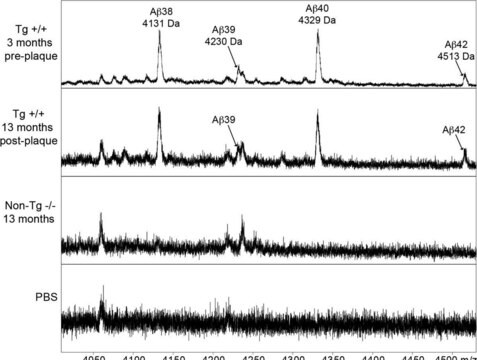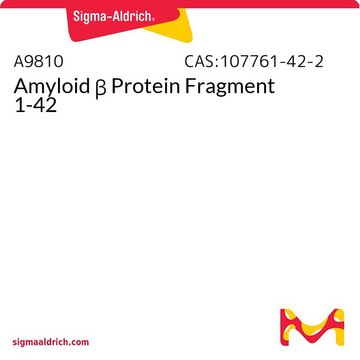A8326
Anti-Beta (β)-Amyloid antibody

rabbit polyclonal
Sinónimos:
Anti-AAA, Anti-ABETA, Anti-ABPP, Anti-AD1, Anti-APPI, Anti-CTFgamma, Anti-CVAP, Anti-PN-II, Anti-PN2, Anti-alpha-sAPP, Anti-preA4
About This Item
Productos recomendados
Nombre del producto
Anti-β-Amyloid Protein (1-40) antibody produced in rabbit, whole antiserum
origen biológico
rabbit
conjugado
unconjugated
forma del anticuerpo
whole antiserum
tipo de anticuerpo
primary antibodies
clon
polyclonal
Formulario
liquid
contiene
15 mM sodium azide
reactividad de especies
human
validación mejorada
independent
Learn more about Antibody Enhanced Validation
técnicas
immunohistochemistry (formalin-fixed, paraffin-embedded sections): 1:100 using human Alzheimer’s disease (AD) brain tissue
indirect ELISA: 1:4000-1:8000
Nº de acceso UniProt
Condiciones de envío
dry ice
temp. de almacenamiento
−20°C
modificación del objetivo postraduccional
unmodified
Información sobre el gen
human ... APP(351)
Descripción general
Inmunógeno
Aplicación
- immunocytochemical localization of Aβ peptides
- immunocytochemistry
- immunoprecipitation
- focused ultrasound-microbubble enhanced antibody delivery (FUS-MB)
Acciones bioquímicas o fisiológicas
Rabbit Anti-β-Amyloid Protein (1-40) antibody does not stain control sections of normal brain tissues.
Forma física
Cláusula de descargo de responsabilidad
¿No encuentra el producto adecuado?
Pruebe nuestro Herramienta de selección de productos.
Producto relacionado
Código de clase de almacenamiento
10 - Combustible liquids
Clase de riesgo para el agua (WGK)
WGK 3
Punto de inflamabilidad (°F)
Not applicable
Punto de inflamabilidad (°C)
Not applicable
Elija entre una de las versiones más recientes:
¿Ya tiene este producto?
Encuentre la documentación para los productos que ha comprado recientemente en la Biblioteca de documentos.
Los clientes también vieron
Nuestro equipo de científicos tiene experiencia en todas las áreas de investigación: Ciencias de la vida, Ciencia de los materiales, Síntesis química, Cromatografía, Analítica y muchas otras.
Póngase en contacto con el Servicio técnico

